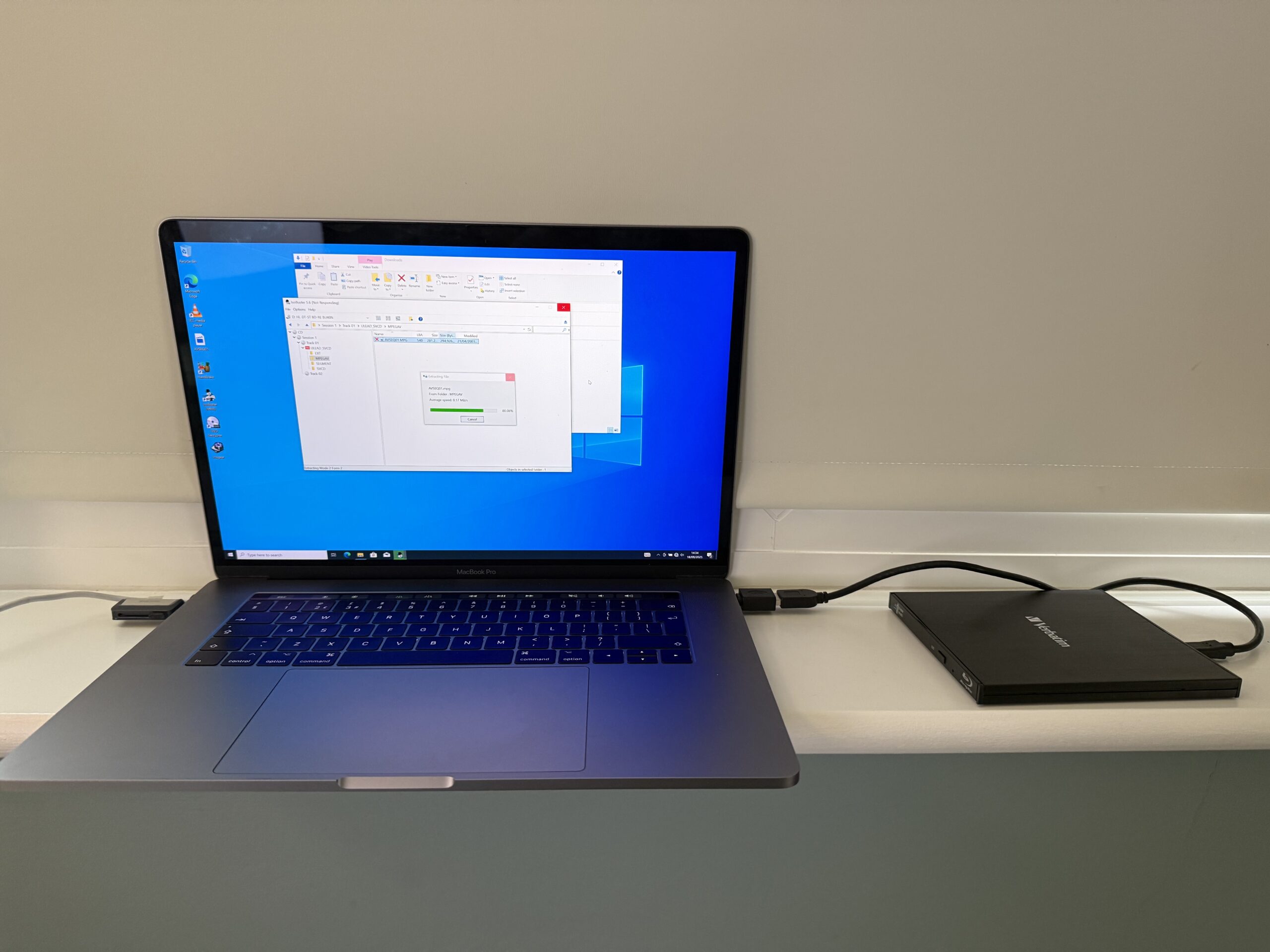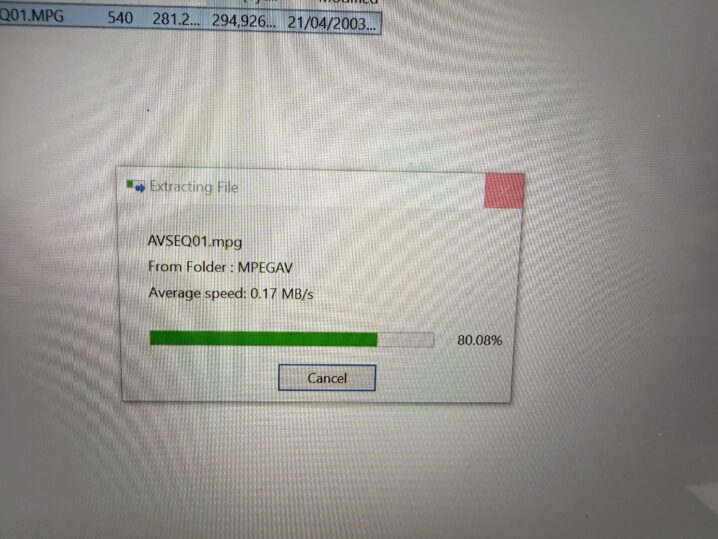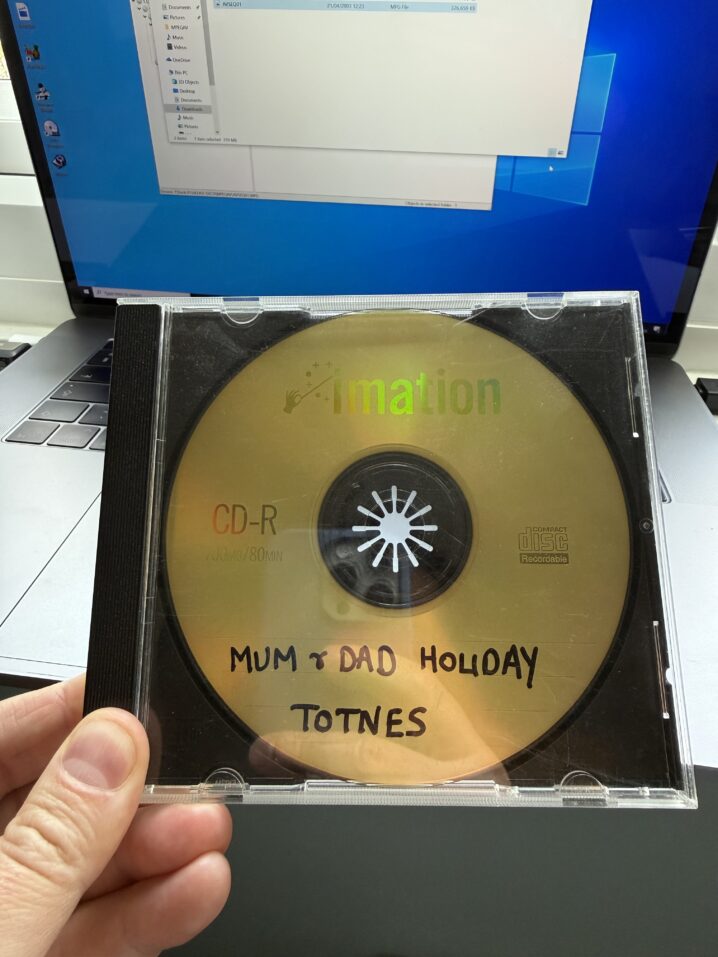I’ve been making my way through a pile of old home movies stored on VHS and VHS-C, converting each one using an 30-year-old Sony VCR and a USB capture device on my M1-series Mac. This has worked perfectly and has allowed me to preserve precious video in the best quality this setup will allow.
In amongst the VHS were a few SVCDs. I recently purchased a USB-C powered Blu-Ray drive so I could make ISOs of some CDs that came on the cover of old PC magazines I had lying around. Easy, I thought – put the SVCD in the Blue-Ray drive, and copy the video files off. As it turns out, not so easy. Not so easy at all.

The Problem
When inserted into a computer, the SVCDs all had a filename of ULEAD_SVCD. A quick Google, and a look at the date of some of the files, revealed that it was most likely burned in 2003 using Ulead MediaStudio Pro 7, and was an MPEG-2 file, possibly on a non-comformant ISO format. There was also mentions of ‘mode 2’ disks and how they’re not supported on newer versions of macOS.
Here’s what didn’t work:
- Copying the MPEG file using macOS Finder. This gave an ‘error -36’.
- Trying to play the file in VLC. This gave another error relating to ‘MRL’.
- Creating a disk image in Disk Utility. This gave an input/output error.
- Copying the file using cp in the terminal.
- Dragging the .dat file in another folder on the SVCD into Handbrake and letting it work things out.
- Purchasing a £2.40 license for the MPEG-2 codec from the Raspberry Pi Codec Store, adding it to my Raspberry Pi 3B (RPi 4 and 5 aren’t compatible), buying an official Raspberry Pi 3B power supply becuase mine was undervolting the system and preventing the Blue-Ray drive from working correctly.
- Installing Windows 10 via Bootcamp on my 2017 MacBook Pro and trying most of the above instead. Then trying and failing to use a few tools, such as DVD Decrypter and vcdgear.
The issue I was having was that it appeared the MediaStudio Pro software had added some kind of copy protection which was why all of my attempts at doing anything normal with the files (reading/copying) were failing.
Interestingly, the Raspberry Pi managed to consistantly play the first couple of seconds of video in VLC after I installed the codec but would then just crashed. Occasionally, I would able to get a second or two to play on my Mac or in Windows 10, but not often. I’m not sure under what circumstances it decided to play those seconds though as it seemed to be random. It seemed as though the copy protection was interspliced with the video, which is why the video stopped when it reached an invalid frame, but I couldn’t say for sure.
The Solution

After much searching and sifting through old Reddit posts asking similar questions, someone suggested installing an application called IsoBuster and trying to rip what I needed using that. I was able to find version 5.6 (64-bit) and installed it on Windows 10, not needing to register it or enter a serial number for it to do what I needed.
After installation, I clicked ‘Select a drive’ at the top of the screen, chose my Blu-Ray drive, then selected the appropriate folder that appeared on the left, and then right clicked on the MPG file and clicked something along the lines of ‘Extract only MPEG frames’. This asked me where to save it, and after doing so, it started ripping the file. Occasionally, IsoBuster completely hung, before then springing back into life and copying the next portion of the file.
It was a slower than expected process – my 326MB video file took around 20-mins to extract, but after it completed, I tested the video by opening the file in VLC and sure enough, the whole thing played without issue.
